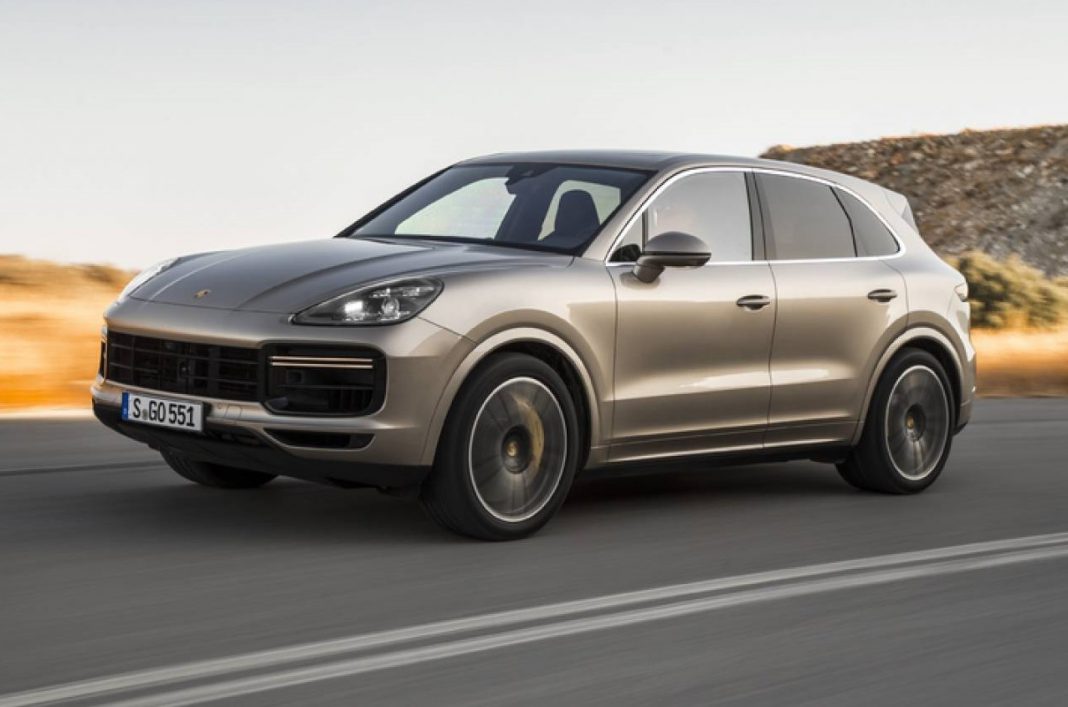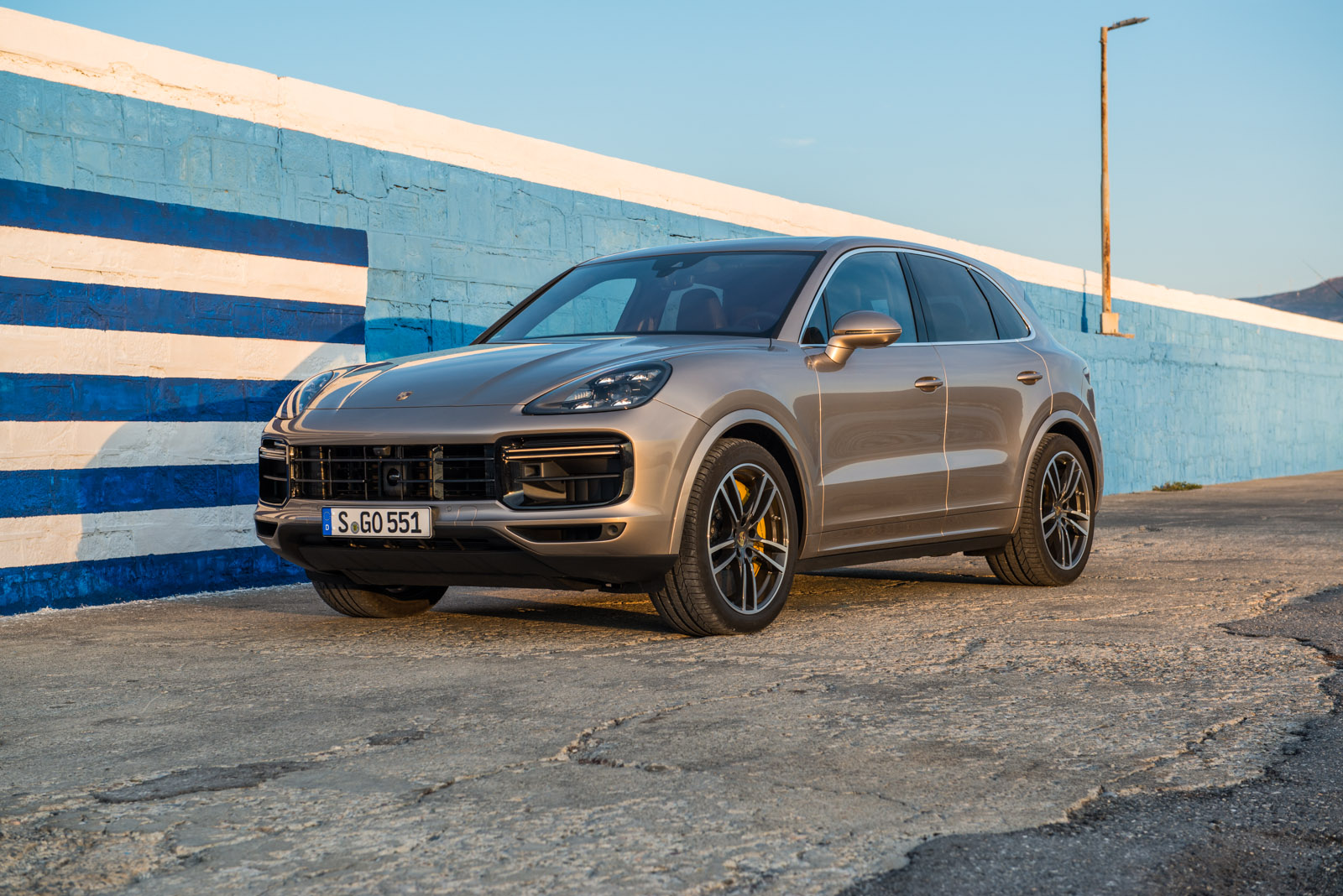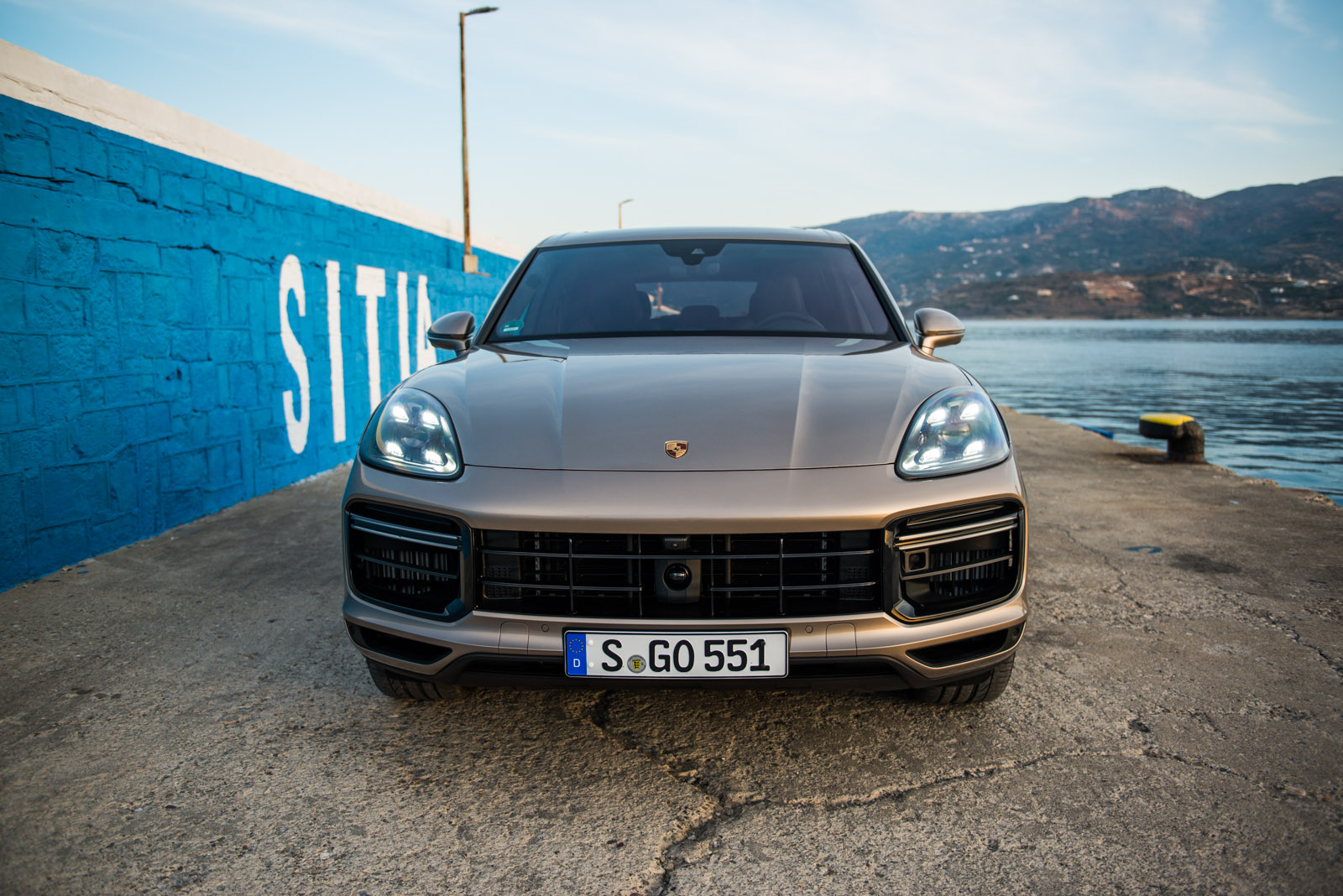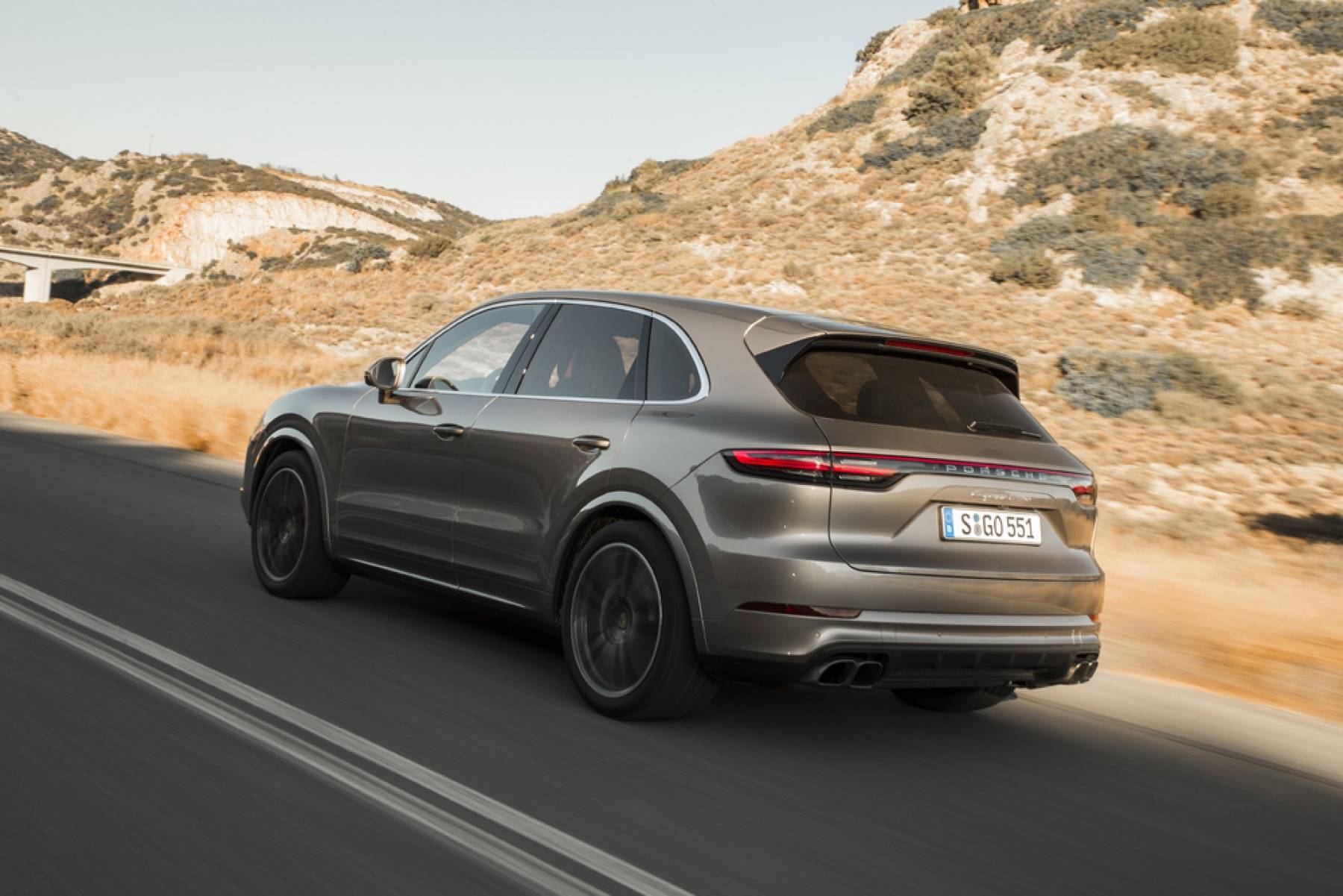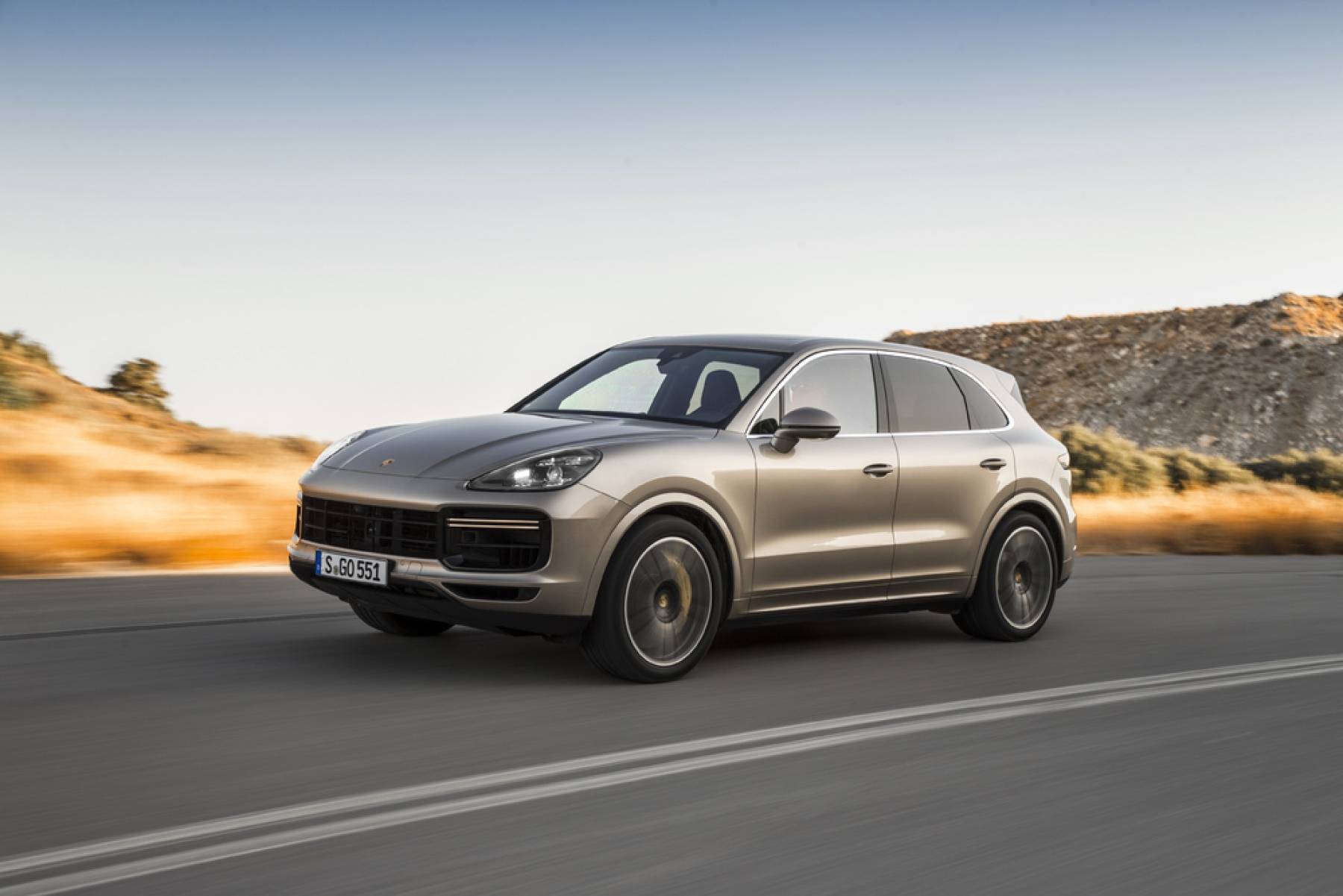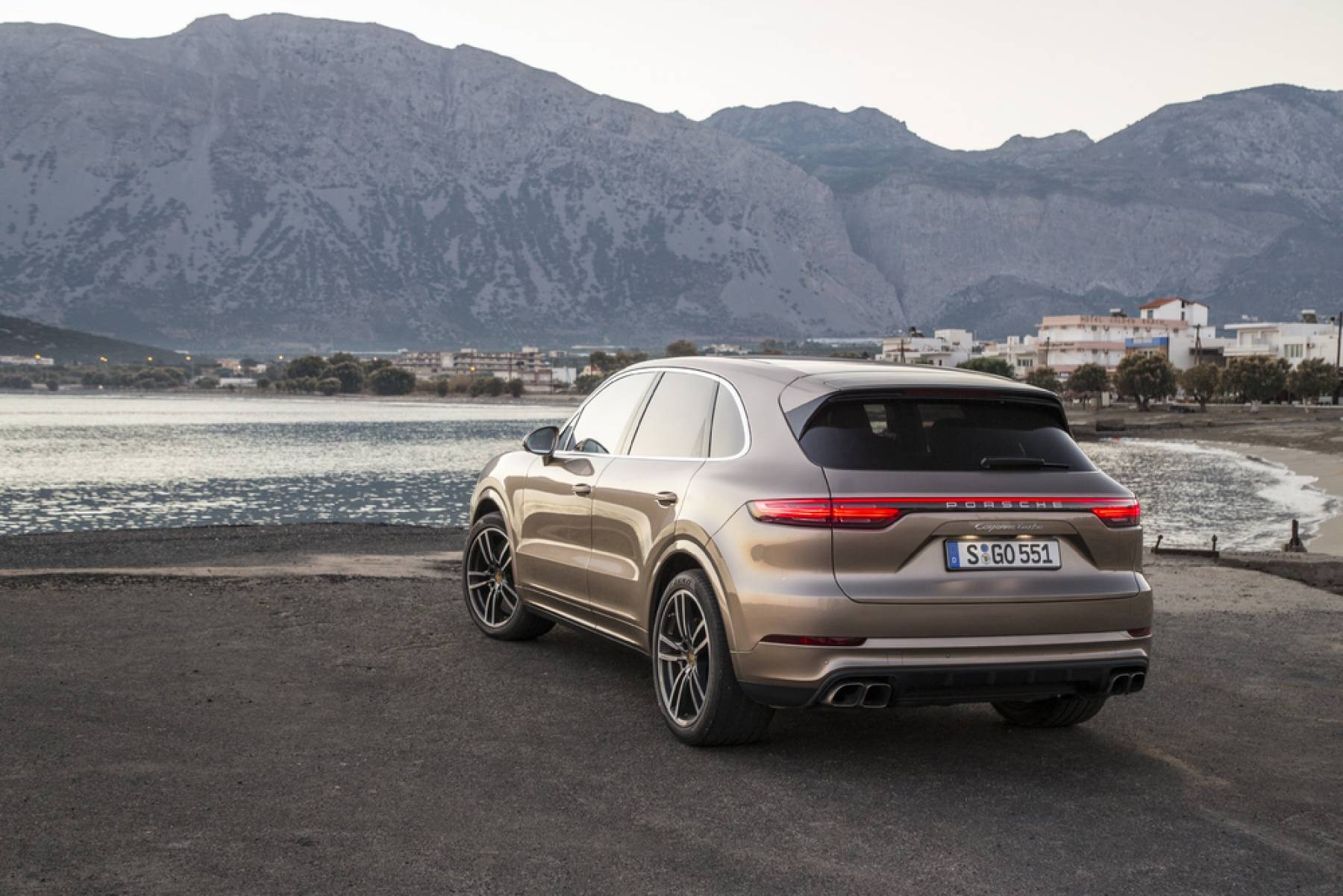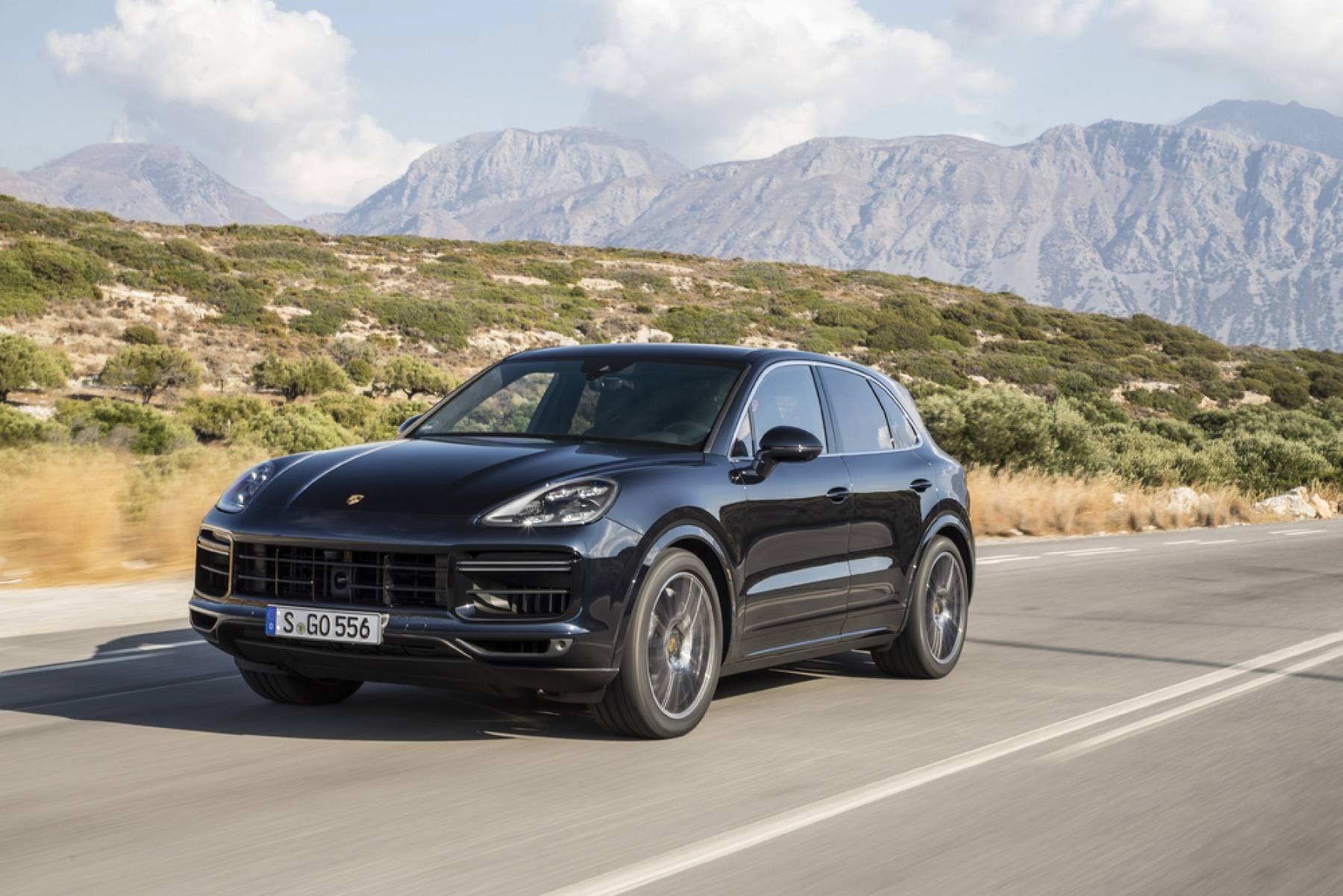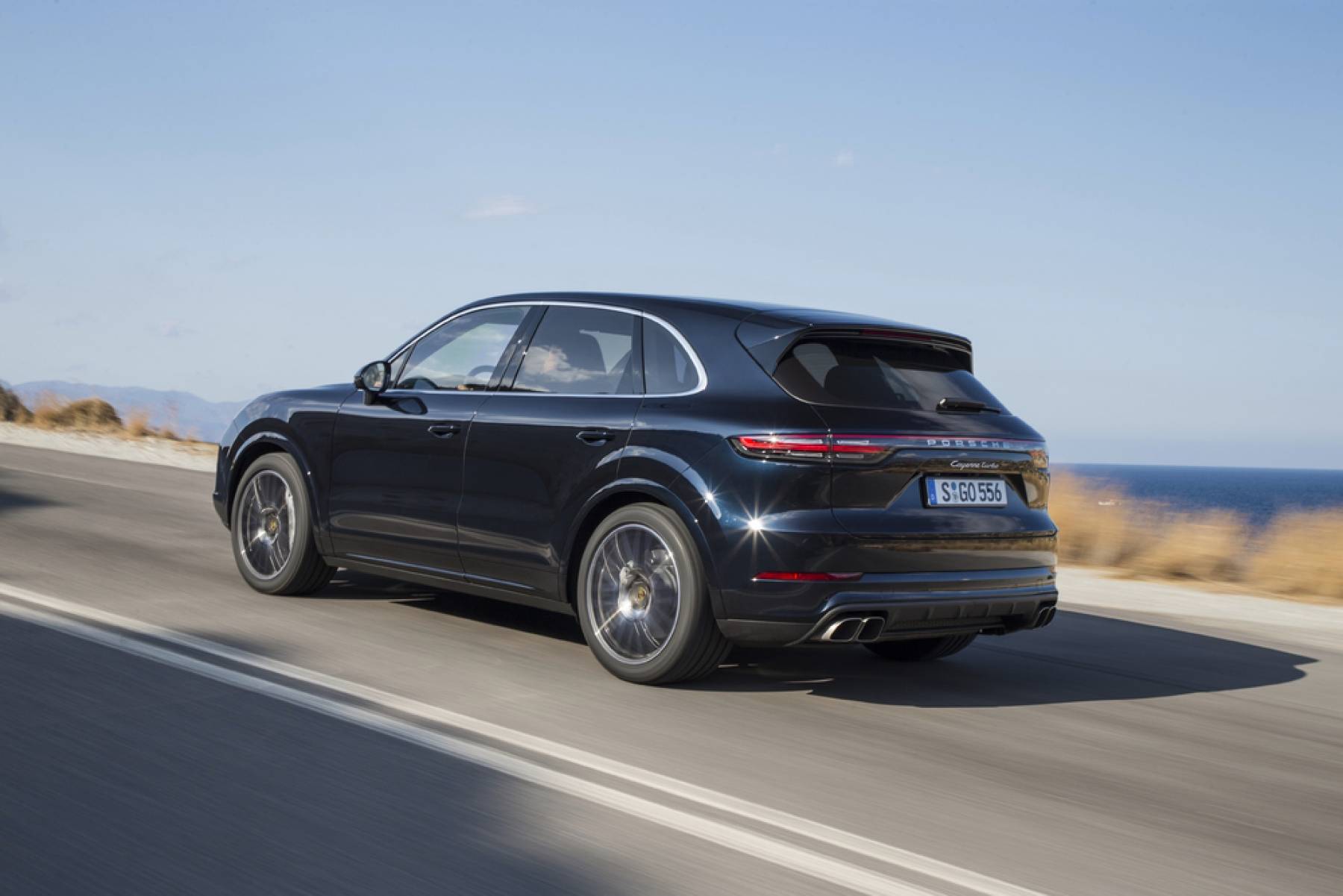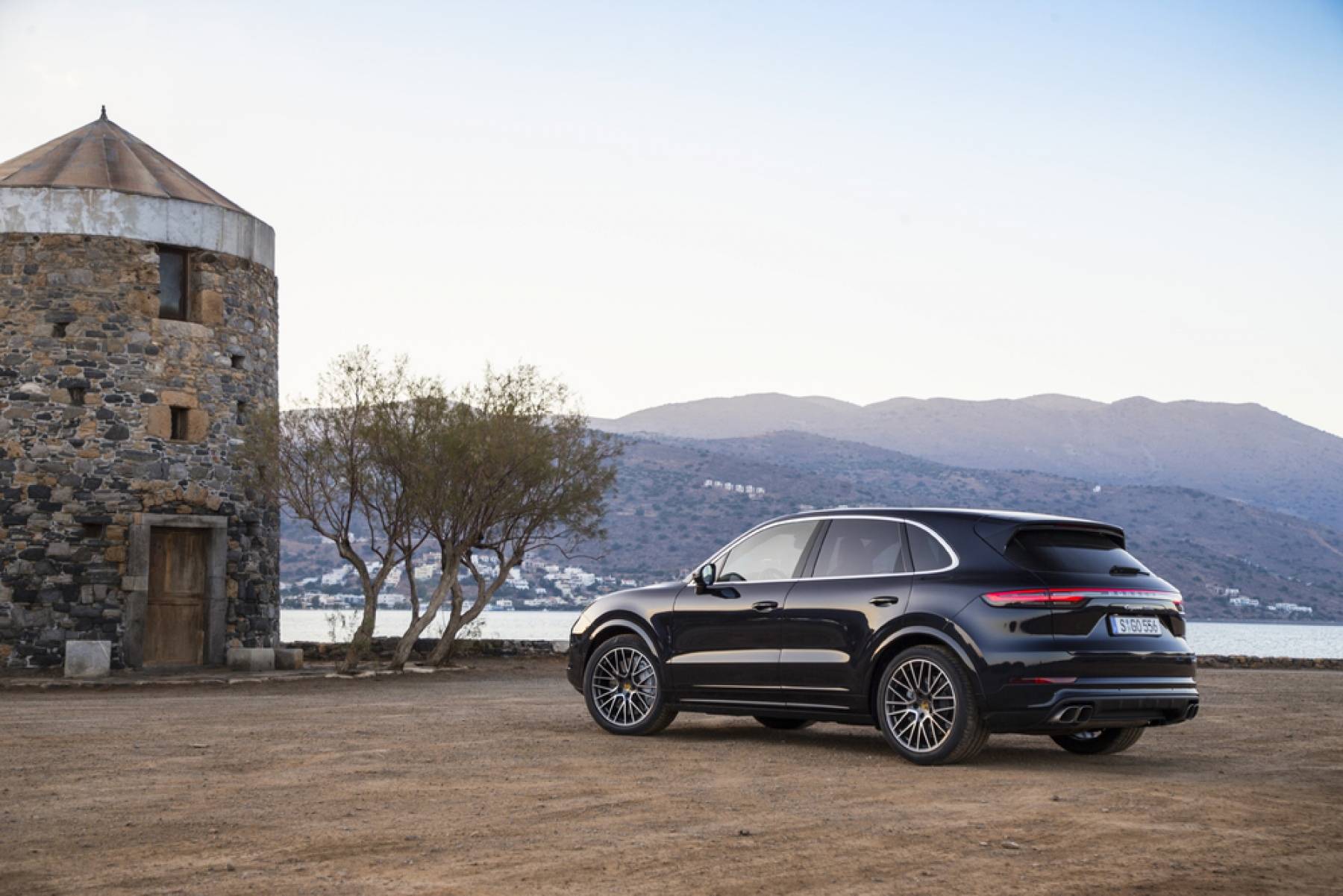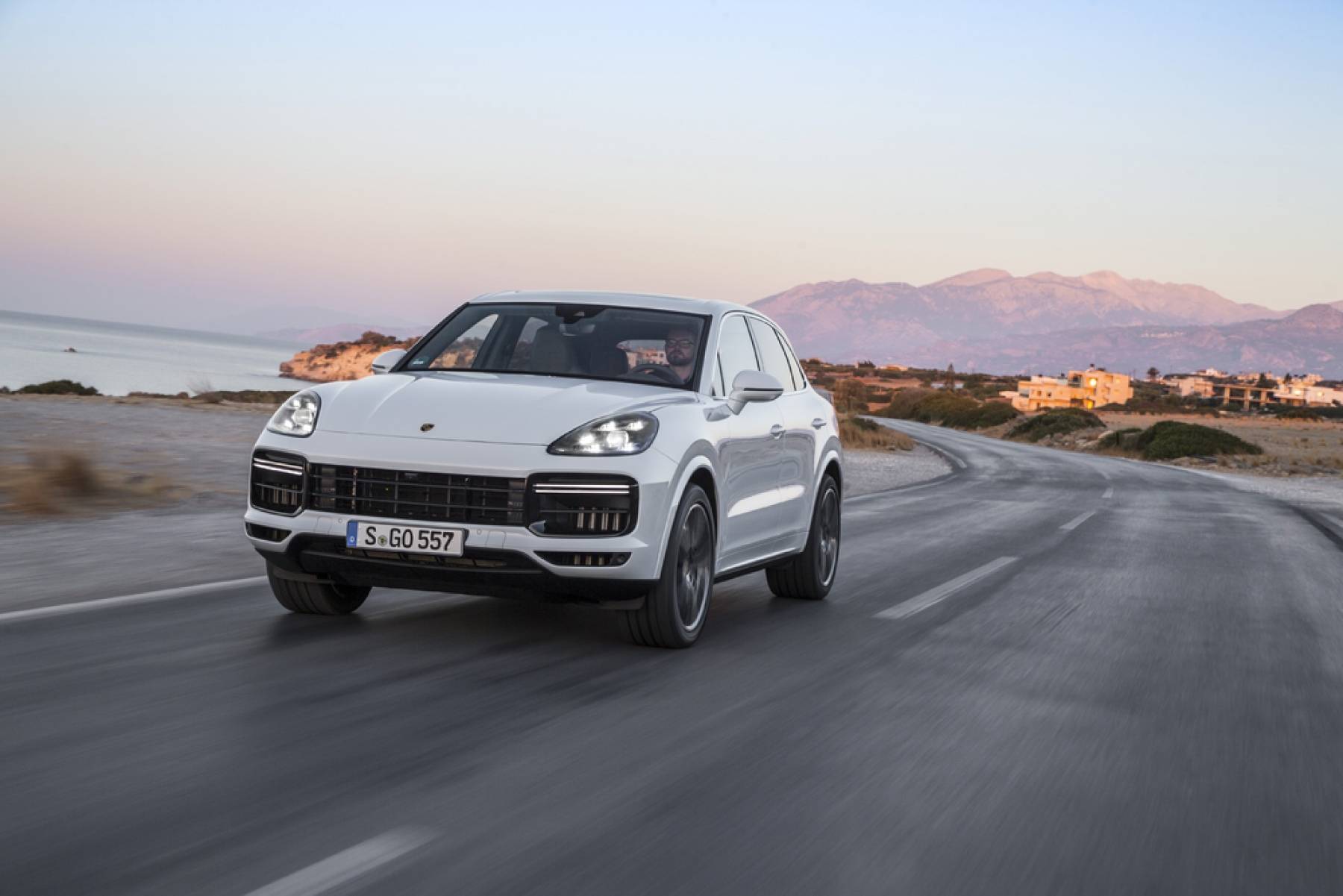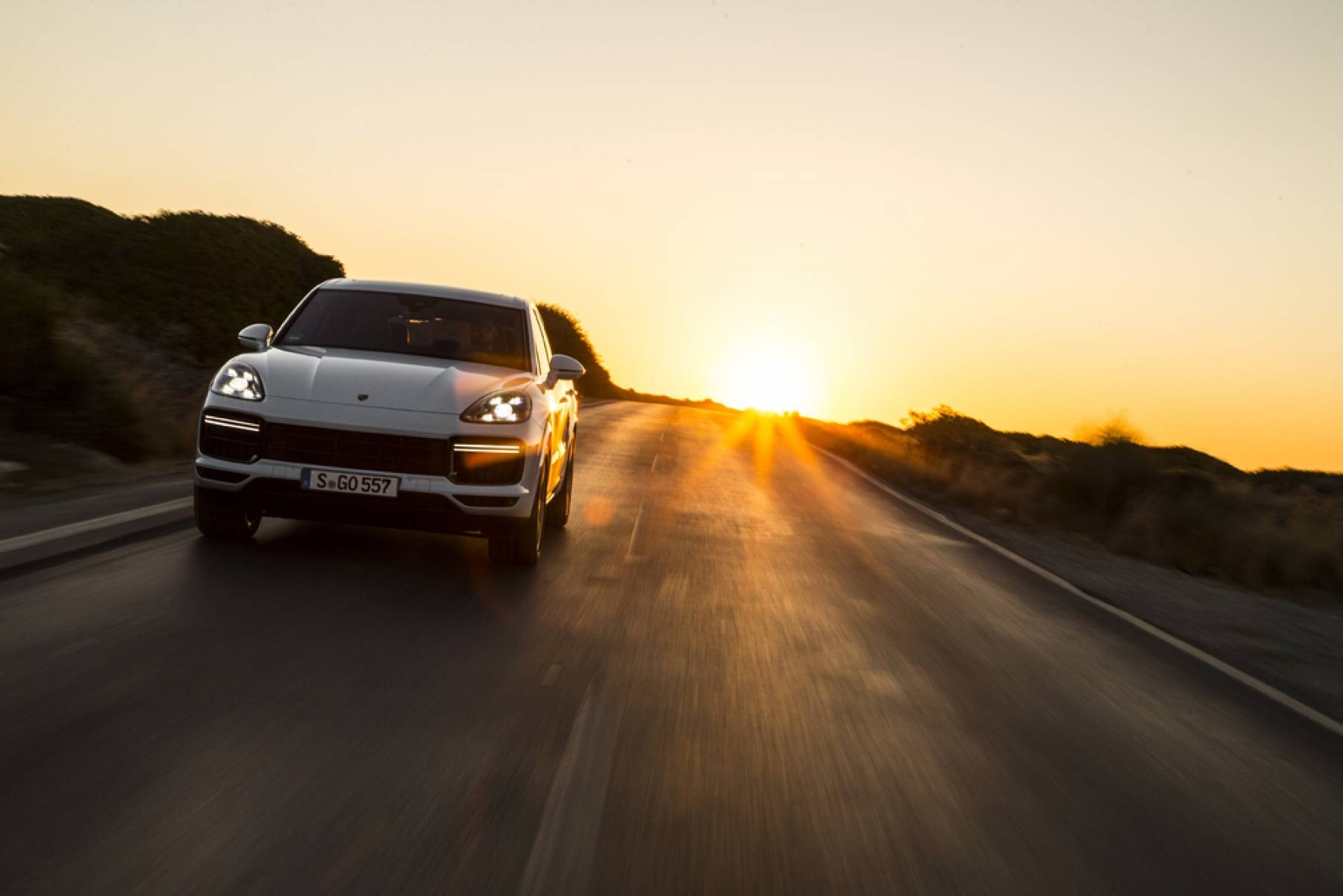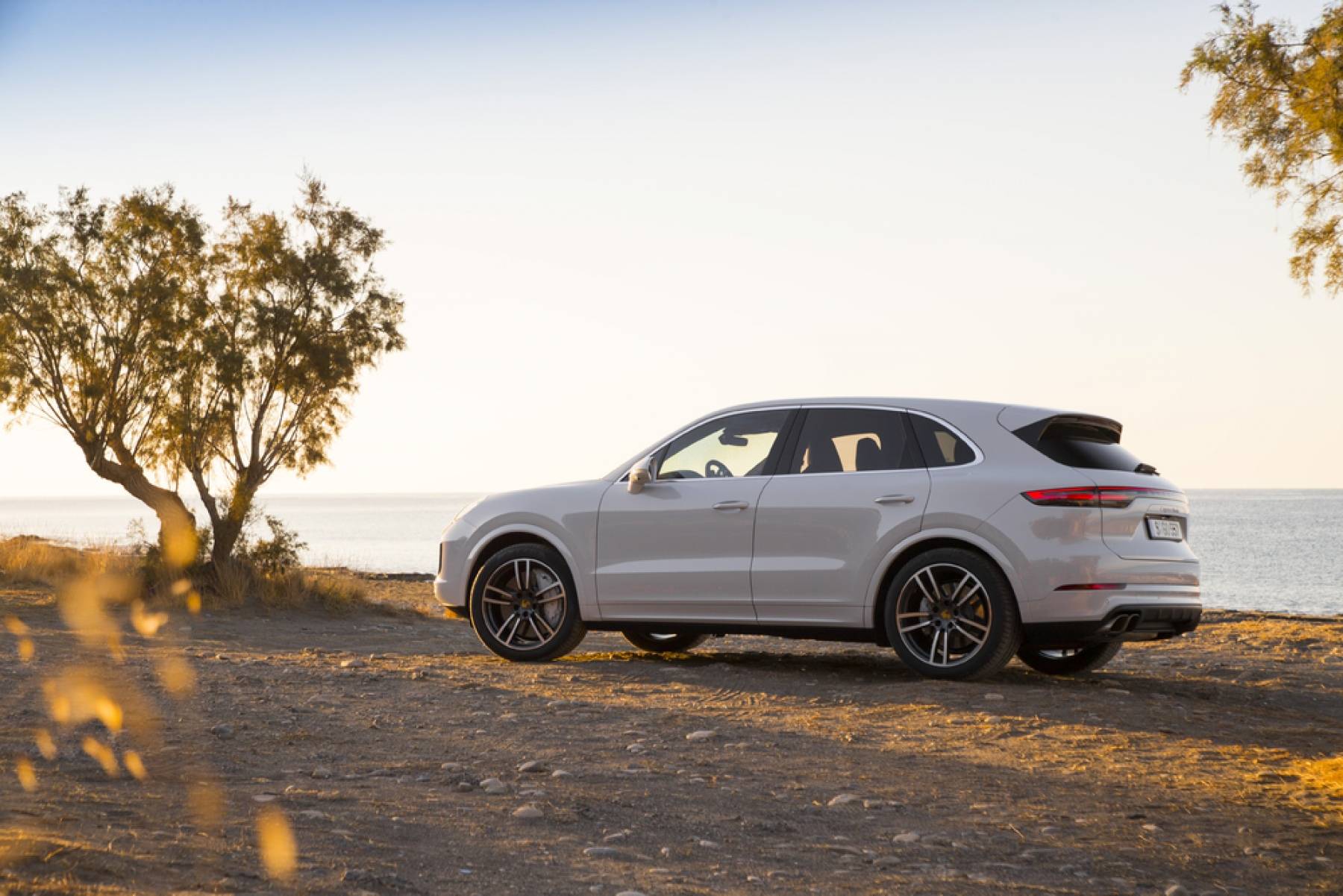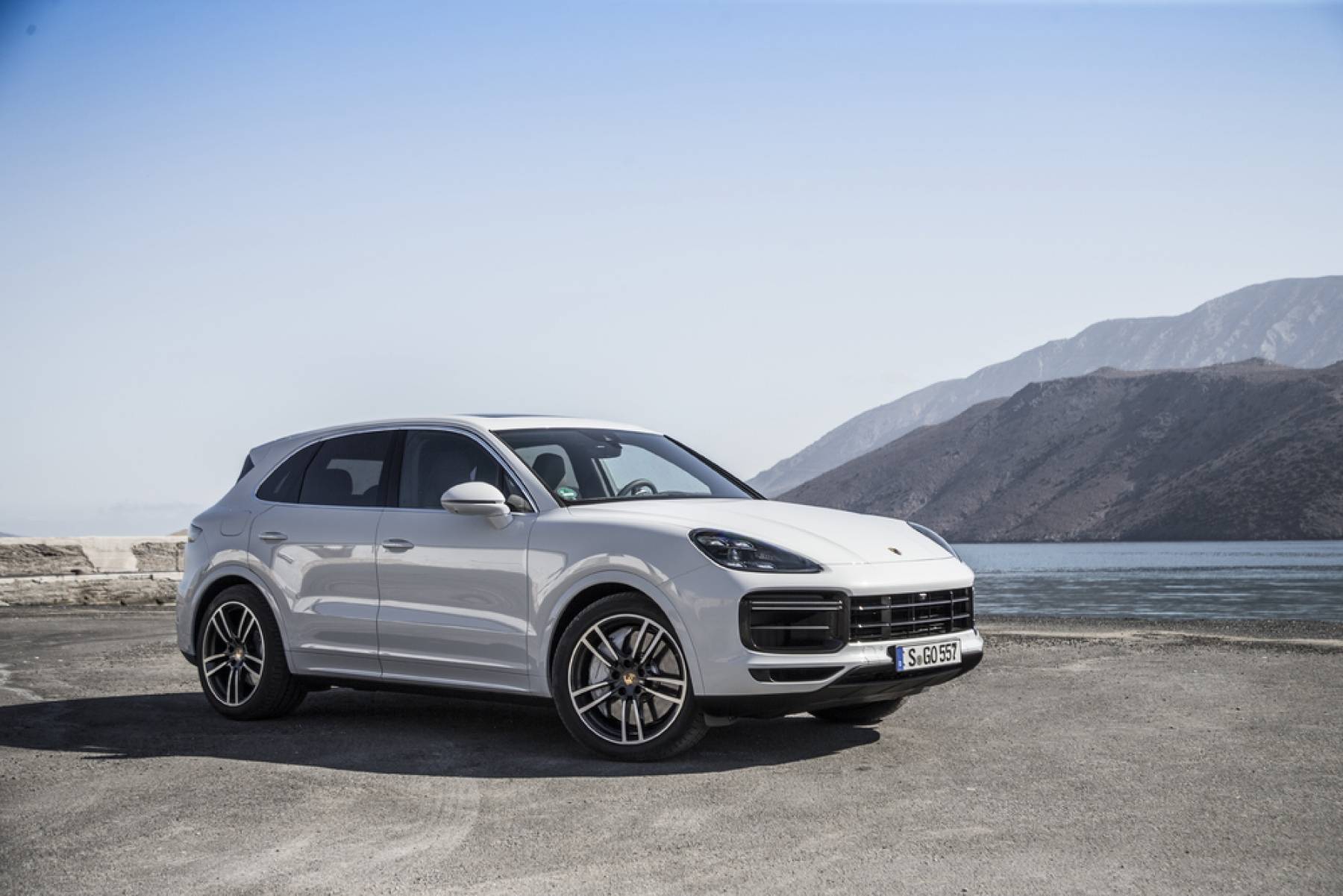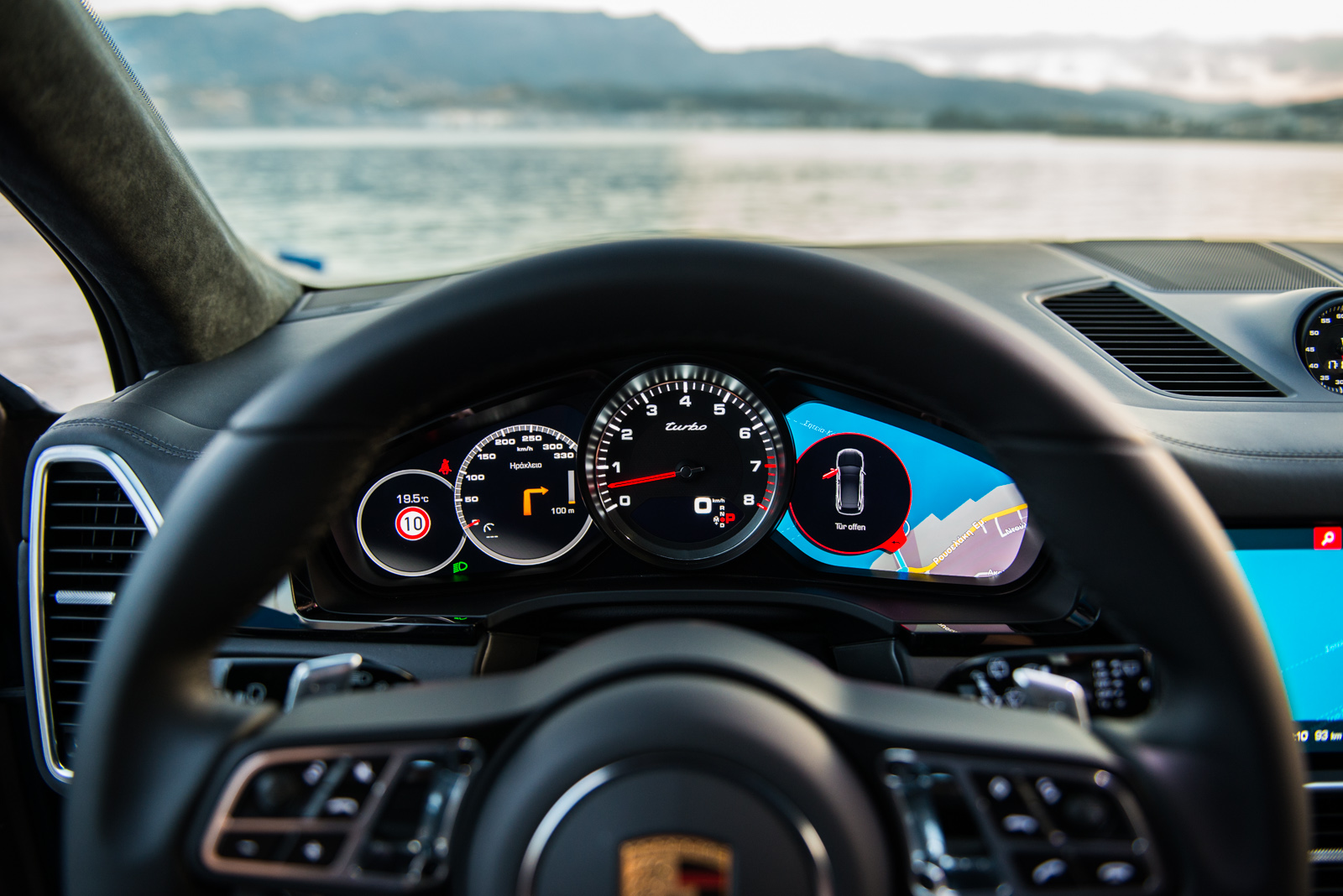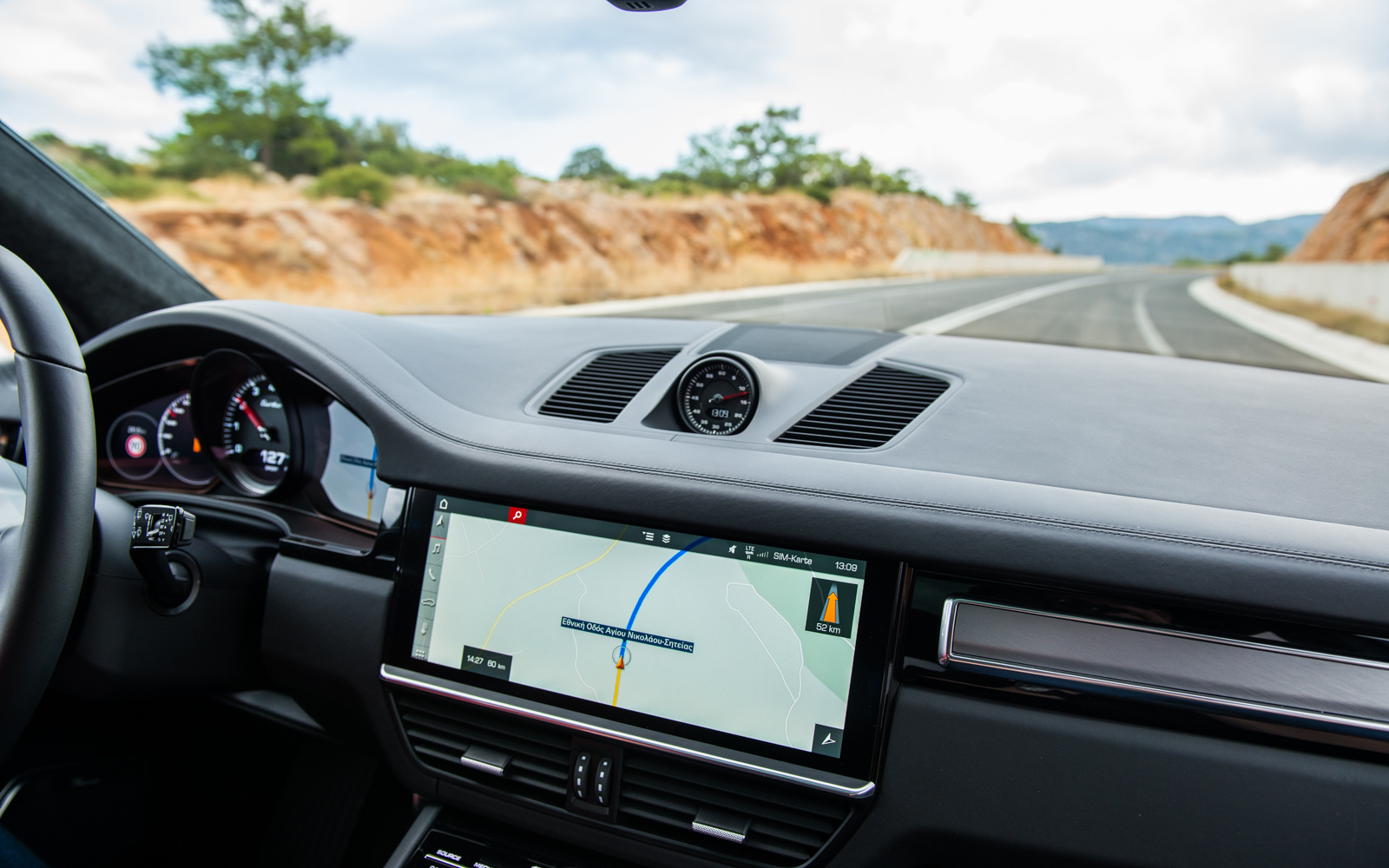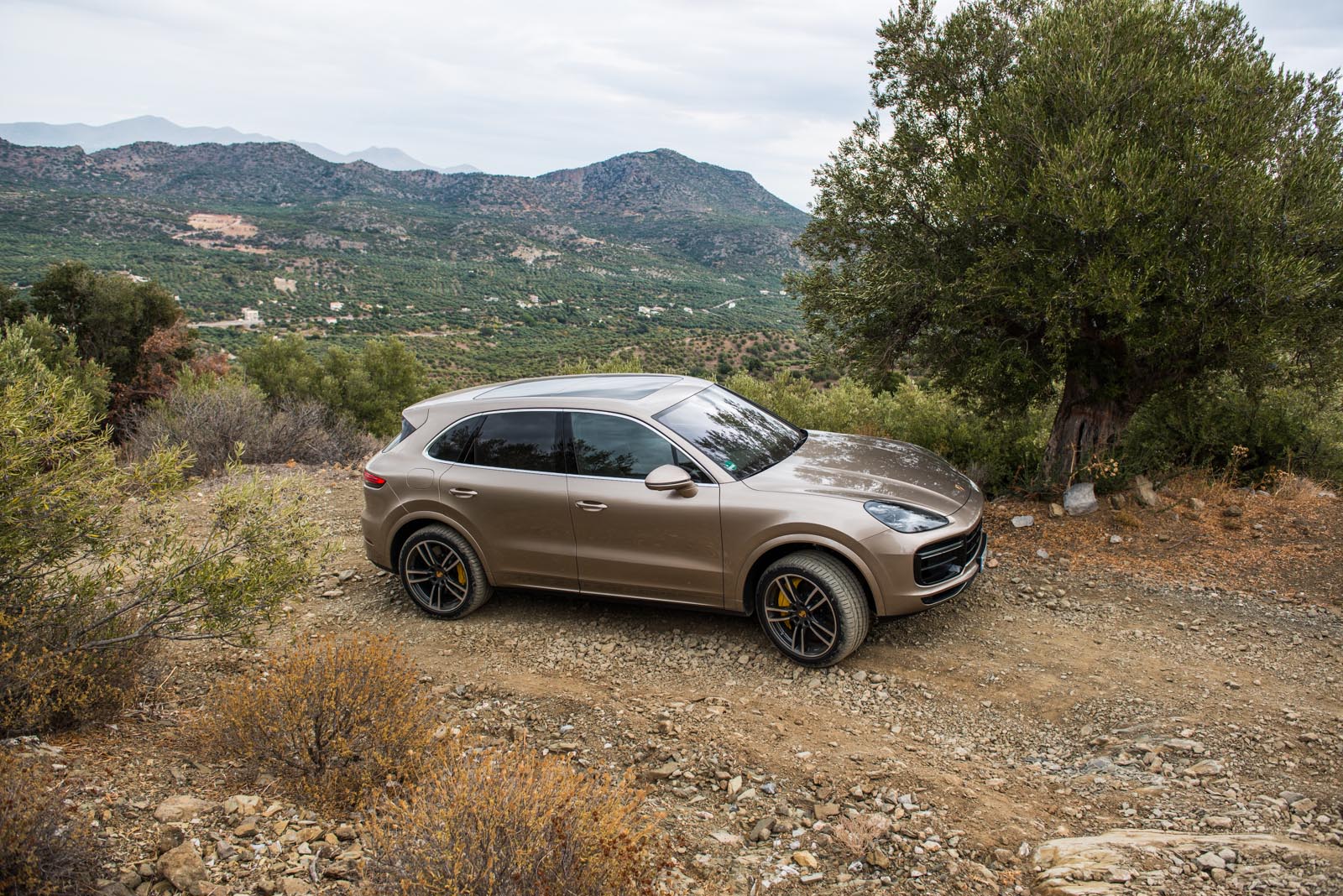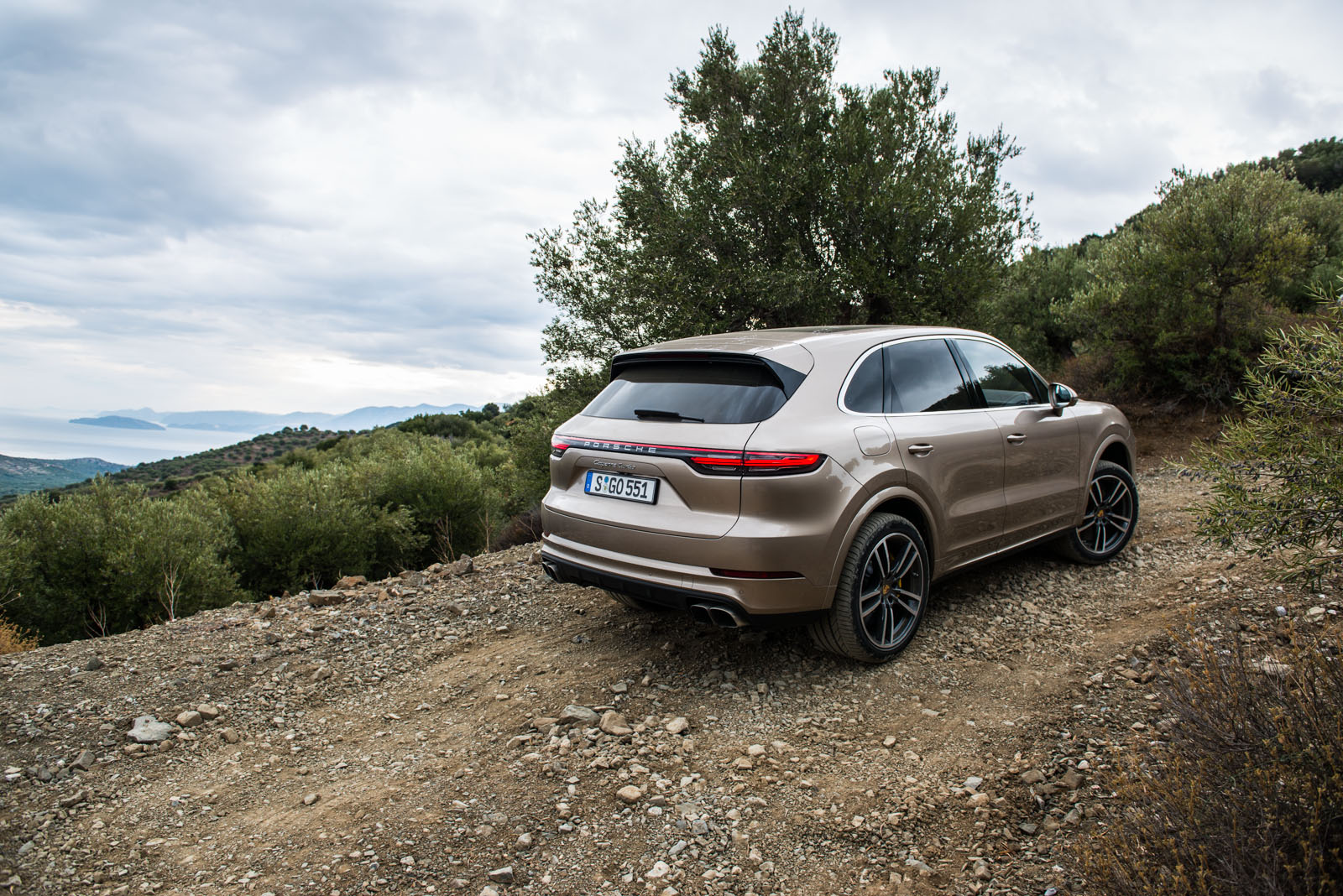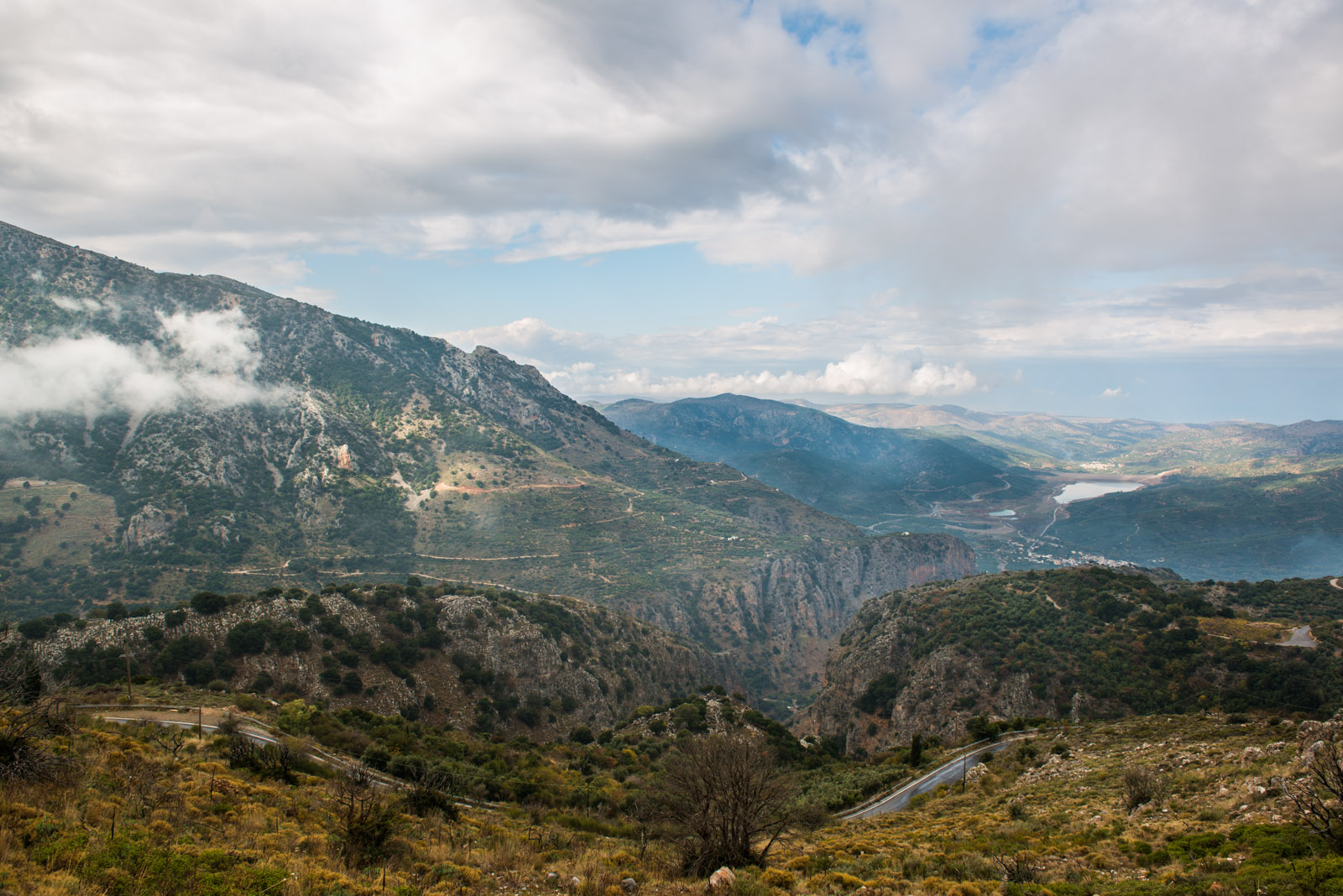The Porsche Cayenne is perhaps one of the brand’s most controversial cars to have been introduced to the market. Not because of its design or capabilities, but simply because it’s an SUV with a Porsche badge. To this day there are still many people that won’t put the discussion to bed, despite the fact that the Cayenne celebrated its 15th birthday this year.
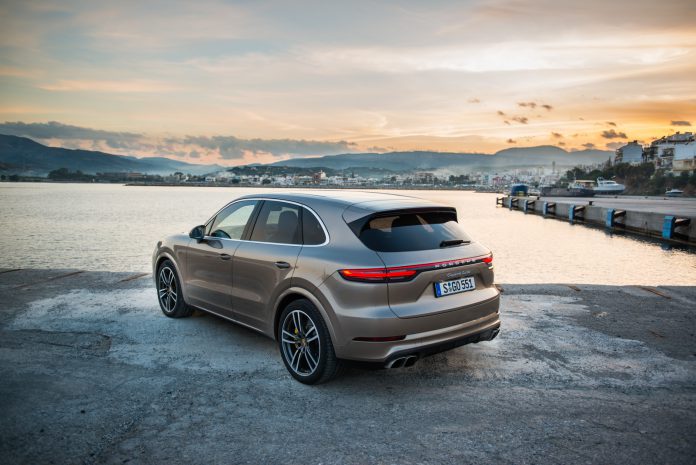
Back in 2002 when Porsche first premiered the Cayenne, skeptics said it could hurt the brand’s image that was carefully built up over the previous decades. A Porsche has two seats and is known for its outstanding driving dynamics, what in the world was this raw looking SUV and why did it have a Porsche badge?
Two generations Cayenne later, Porsche has sold over 770,000 of them and the reality is that the brand’s SUVs are responsible for roughly 70% of all annual Porsche deliveries. In fact, some would go as far as to say that the Cayenne has played an integral role in Porsche’s recent success, indirectly enabling the further development and production of the brand’s 911 line and special vehicles like the 918 Spyder and the recent GT2 RS.
Nobody can deny that the Cayenne has opened many doors to and for Porsche, and the sporty SUV remains one of the brand’s most important vehicles today. With the record numbers of 2016, there is a significant amount of weight on the 2018 Cayenne’s shoulders to continue this successful momentum. We were invited to test drive the new top model, the Porsche Cayenne Turbo, on the beautiful Greek island Crete, and see if it’s capable to carry the brand to even greater heights.
Design
The Porsche Cayenne went through quite an evolution during the past 15 years. The 2018 Cayenne is much more refined in its design and comes across as less bulky, even though it has grown in size. The 2018 model grew by 63 mm compared to its predecessor, without a change in length for the wheelbase. The new design saw 9 mm being shaved off the top and is slightly wider at the rear end.
In terms of design there is simply much more going on with the 2018 Cayenne. There are more lines articulating its athleticism and especially the front of the car looks much more pronounced. A new LED headlight design, almost identical to that of the latest Panamera, has been brought over and the grille underwent some cosmetic changes to make the Cayenne look wider at the front.
The designers at Porsche went even further with the Turbo model, enlarging the air intakes and applying a mix of matt- and gloss-black surfaces so the front grille appears to be one unit. The Turbo model is further set apart from the Cayenne and Cayenne S models through its double-row front headlight modules.
Changes to the rear of the new Cayenne are probably most noticeable. The Cayenne now too features Porsche’s hallmark LED light strip across the entire rear of the vehicle. While the rear lights in previous generations always looked a bit goofy, Porsche really nailed it on this one. The taillights and integrated three-dimensional Porsche logo form a harmonious sight and definitely add more visual appeal to the car’s rear apron.
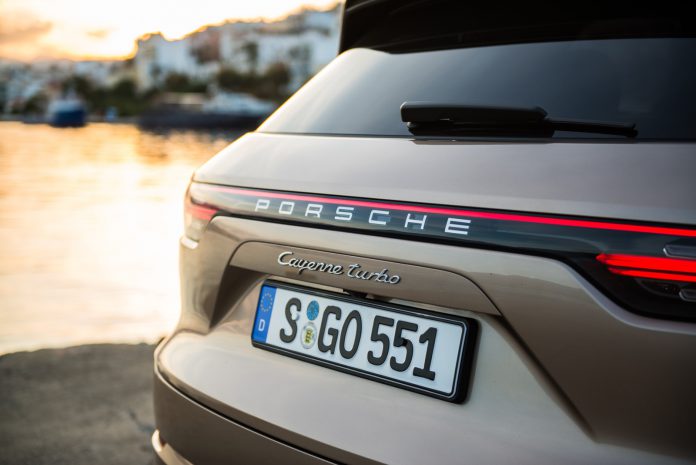
The Cayenne Turbo is further set apart through its adaptive roof spoiler and characteristic set of tailpipes. The new adaptive spoiler is a first in its segment and quite the piece of aerodynamic art. It goes hand-in-hand with the arrival of Porsche Active Aerodynamics (PAA) in the SUV segment and gets to work at speeds beyond 160 km/h. The spoiler has five different positions, the fifth and most extreme of which, sees the spoiler panel extend to a 28.2 degrees position and functions as an active airbrake when harshly stepping down at the brake pedal at speeds between 170 and 270 km/h.
Body, chassis and suspension
The new PAA system makes the new Cayenne more stable at higher speeds and cuts back the braking distance by 2 meters at a full brake from 250 km/h. Although impressive, weight savings thanks to the new lightweight construction body lay at the foundation of the SUV’s increased driving dynamics. The Cayenne’s outer body shell is now completely fabricated of aluminum and combined with other ‘smart materials’ Porsche managed to shave off an impressive 135 kilograms in bodyweight compared to the predecessor. Unfortunately the final difference in curb weight is not as significant, due to the expanded range of equipment. At the end of the day Porsche managed to shake off 55 kg on the regular Cayenne, 65 kg on the Cayenne S and 10 kg on the Turbo, which now weighs 2,175 kg.
The new Cayenne models are underpinned by a brand new and more versatile chassis that forms the key to a better balance between dynamism and comfort. Brought together under the name Porsche Dynamic Chassis Control (PDCC), a range of systems that previously worked independently are now brought together and controlled via Porsche 4D Chassis Control.
At the base of this system lies a new axle concept based on an aluminum auxiliary frame that replaces the old steel frame. A separated link suspension is new at the front axle, while Porsche decided to prolong the multi-link suspension with steel links and steel springs at the rear axle as standard. A new adaptive air suspension with three-chamber setup is fully configurable to five different settings including a deep setting, which can only be employed at speeds over 210 km/h and an even deeper ‘loading setting’, which can only be employed when the vehicle is stationary.
Another world premiere on the new Cayenne is the Porsche Surface Coated Brake (PSCB). At the core of this new technology are discs with an exceptionally hard tungsten-carbide coating, combined with specially developed brake pads. The big advantage of this new brake technology is that it prolongs the service life by 30% because the brake discs wear at a significantly slower rate. They also cause less brake dust to appear on the rims and boast improved responsiveness compared to steel brakes.
Just like Porsche’s ceramic braking system (PCCB), the PSCB uses ten-piston calipers at the front and four-piston calipers at the rear. What’s cool is that this new system comes standard on the Turbo model and is instantly recognizable by its white calipers. On the other models it’s an option and only available in combination with 20- and 21-inch wheels. Those who feel particularly flush may want to check out the ceramic braking system, which remains as the top of the line and is available as an exclusive option.
Another technical highlight straight from Porsche’s pandora box is the 911-derived rear-axle steering, now also optionally available on the Cayenne. Rear-axle steering reduces the car’s turning circle significantly and further pushes the boundaries of dynamic driving. At speeds up to 80 km/h the axles steer in opposite directions, while at higher speeds they are pointed in the same direction.
Finally Porsche has switched out the electro-hydraulic active roll stabilization system for an electromechanical version based on the 48-volt subsystem. The new system is even more responsive, compact and requires less energy. In off-road mode, disengagement of the anti-roll bar halves through the PDCC system enable optimal traction.
Engine, transmission and performance
The new Porsche Cayenne will be available in three familiar configurations derived from the Panamera at launch. The base Cayenne features a 3.0-liter six-cylinder turbo engine that delivers 340 horsepower (250 kW) and 450 Nm of torque. The Cayenne S comes with a 2.9-liter V6 twin-turbo engine, good for 440 hp (324 kW) and 550 Nm of torque. Finally the Cayenne Turbo packs a 4.0-liter V8 twin-turbo that produces 550 hp (404 kW) and 770 Nm of torque, up from 520 hp and 750 Nm in the previous Turbo model.
| Model | 0-100 km/h | Top Speed |
|---|---|---|
| Cayenne | 5.9s | 245 km/h |
| Cayenne S | 4.9s | 265 km/h |
| Cayenne Turbo | 3.9s | 286 km/h |
*All the above numbers are based on the optional Sport Chrono Package.
Compared to its predecessor, the Porsche Cayenne Turbo rushes from 0 to 100 km/h half a second faster and increases the top speed by 7 km/h. What’s for sure, is that these are stone cold sports-sedan performance figures. The fact that a 2100 kg+ SUV is capable of reaching 100 km/h from a standstill in under 4 seconds was unthinkable not that long ago.
Porsche achieved these numbers through its downsizing program, which saw the displacement of all engine options go down significantly. In the spotlight is the new 4.0-liter V8, which replaces the likes of the rough and burbly 4.8-liter engine from the previous generation. Interesting here is that despite downsizing the engine, the new Turbo model releases more CO2 than its predecessor. But that is clearly not the type of efficiency that the new setup is about.
Thanks to a ‘hot inside V’, the new V8 is much more compact and can therefore be placed much deeper inside the engine bay, lowering the Cayenne’s center of gravity. The shortened exhaust path between the turbos and combustion chambers improves response and boost torque in the lower rpm.
Just as much responsible for the Cayenne’s improved performance is the new eight-speed Tiptronic S automatic transmission. Most noticeable about the new transmission apart from faster shifts is the change in gear spread. The 1st gear is now significantly shorter, while the 8th gear has been made longer to save what’s left of ‘economy’ in fuel economy. All Cayenne’s are able to reach their top speed in 6th gear, which leaves the 7th and 8th gears for comfort and efficiency purposes.
Ticking the Sport Chrono Package off the list is almost a must if you buy a Cayenne Turbo. The 911-based performance package brings a nifty switch to the steering wheel that lets you choose between four driving modes: normal, sport, sport plus and the configurable individual mode. Additionally there is the ‘Sport Response’ button at the heart of the switch, or as I like to call it: ‘the 20 seconds of fun’ button. Push it and the engine, transmission and suspension collude to give you the ultimate 20-second performance rush.
Interior, infotainment and driving assistance systems
The interior space of the new Cayenne has also changed significantly, mostly noticeable through the new rising center console from the 911 and Panamera. The black mid-console with integrated 12.3-inch touch display seamlessly integrate with the rest of the clean and driver-oriented interior. There are not too many gimmicks or otherwise distracting or unnecessary features, making the interior cabin of the Cayenne a tranquil place to be.
The new adaptive sport seats in the Cayenne Turbo have a pleasant silhouette and provide very good lateral support. They come with further raised side bolsters for increased comfort at higher speed driving, although now the Cayenne Turbo literally launched itself into near supercar territory, I feel like active side bolsters wouldn’t be out of place here.
The backseat area of the Cayenne Turbo is also very reasonable in terms of space. I was able to sit quite comfortably behind myself (1.88m) and had plenty of head space. Here too comes back Porsche’s aim to make the Cayenne more of an all-rounder: optional 14-way comfort seats with seat heating are available as an option, making backseat cruising even more comfortable. The Cayenne has also become more practical: the added width of the car increases its luggage capacity by a 100 liters with the backseat row folded down. Convenient is the ability to open the trunk through foot movement and the lowered loading configuration, which lets you easily access the Cayenne’s fully flat 1680 liters loading floor.
From practicalities to ergonomics: the 12.3-inch PCM display looks great but how is its functionality? Porsche’s infotainment system portrays the dilemma of many automakers almost perfectly: touch or physical buttons? Porsche found a compromise that incorporates both, something that I have slightly mixed feelings about.
The touch system works fine and is quite responsive, but the presence of many different buttons beneath it makes me nervous. It takes a while before you get used to the interface and the odd positions of some buttons, such as the volume knob for example. It’s positioned centrally behind the gear lever and is relatively tough to reach while driving. Although it’s always possible to change the volume via the steering wheel, I expect the central volume button in the mid-console to be in extended reach from the central armrest.
With Porsche Communication Management (PCM) ticked off the list, the Cayenne is more interactive and connected than ever. An integrated LTE compatible sim card makes sure the vehicle is always online and in touch with online traffic services, your smartphone and music streaming services. The latter are expressed through the interior cabin in style: the Cayenne Turbo comes standard with a new 14-speaker Bose audio system. Those who want to take interior acoustics next level may want to consider the optional Burmester 3D surround sound system.
More tech comes in the form of driving assistance systems. The park assist module comes optionally with a reverse camera, or four individual cameras that are able to jointly project a 360-degree surround view on the 12.3-inch PCM display. Adaptive cruise control, active lane keeping assist and traffic sign recognition are also available as options and basically make the Cayenne capable of cruising semi-autonomously. The optional InnoDrive helps plan ahead through radar and gps technology, calculating the road surface, curves, obstacles, towns and more for up to 3 kilometers ahead. It’s pretty much equal to Audi’s efficiency assist and helps make the daily commute more comfortable.
Driving experience
After touching down at a nearly abandoned local airport in the far East of Crete, Greece, we were taken to the test vehicles via shuttle. The conditions were ideal: a nearly empty island with plenty of weaving country roads ready to be eaten up by the Cayenne Turbo, and a last shimmer of setting winter sun bringing the temperature to a delightful 20 degrees Celsius.
First stop was the harbor of Sitía for a few photos on location. The Cayenne enjoyed plenty of attention from the locals, although I can imagine it must have been an odd sight for these people to see herds of brand new Porsches roam around their island in the low season. With the last rays of sunlight we got on our way to our hotel for the night.
Stepping firmly on the gas for the first time, the Cayenne Turbo propelled forward almost instantly. The brute force and hefty release of torque in the low rpm had the wheels searching for traction for a split-second. After a quick but solid impression of the Turbo’s improved performance, I deemed further exploring its capabilities was best left to the next day during daylight.
I flicked the switch back to comfort to get a feeling of the difference, which is quite significant. The versatility of the Cayenne’s chassis and different driving modes is more evident than ever. Comfort mode doesn’t turn the Cayenne into a soft cushion like the S-Class, but it does feel much more drivable on a day-to-day basis.
The next day presented a better opportunity to push the Cayenne Turbo to its limits. After a short warm-up, we were first invited to take the SUV off-road. A rather challenging trail leading up into the mountains formed no match for the Cayenne’s special off-road mode. Many shakes, bumps and a quick check of the tires later, we got swiftly on our way to the top of the breathtaking Lasithi Plateau.
Putting the Sport Chrono switch into sport plus on the steering wheel was instantly followed by an adequate downshift and released an immediate growl from the rear. The sound of the 4.0-liter V8 is not as intense as the 4.8-liter it replaces, but is still strongly present.
Leaning into the curve I could get a proper feel of the car’s rigidity and the anti-roll bar at work. The stabilization is so superior and the suspension is so stiff, that it almost feels like you’re behind the wheel of a 911. The insanely direct steering and rear-axle steering support almost make you forget about the fact that this monster weighs well over 2 tonnes.
The Tiptronic S gearbox also does its job well. The short first gear ratio is a bit odd in the beginning but hardly noticeable. In second gear the V8 roars the engine all the way to 7,000 rpm, passing the 100 km/h mark in no-time. The new Cayenne Turbo is so overpowering, it’s unlike any other SUV that I have driven.
Price and competition
So how does the Cayenne Turbo stack up against the competition? It’s fair to say that the Cayenne has always ruled the performance SUV market. Even with the arrival of more brands wanting a piece of the lucrative performance SUV market, there isn’t a single one that comes close to the Cayenne’s refinement in driving dynamics. Maserati will soon give it another try with a V8-powered Levante and Alfa Romeo’s Stelvio, which is barely comparable in size, might be a sportive alternative as well.
The Audi SQ7 might also be an option, but is certainly not positioned as strongly. It carries more weight and puts the emphasis on efficiency with its V8 diesel engine. Then those who feel particularly adventurous might want to consider a Tesla Model X, but will have to accept a significant quality deficit and lack of emotion. The likes of the Mercedes-AMG GLE 63 S and BMW X5 M probably come closest to the almighty Cayenne Turbo, but have quite a bridge to gap when it comes to performance. Just think about it: the 2018 Cayenne Turbo has nearly equal performance stats to those of the C63 S sedan!
All that performance does come with a price. As per usual I like to play around with the online configurator and I specced the new Cayenne Turbo to my preference. Starting from €138,850 in Germany, the Porsche Cayenne Turbo will certainly appeal to a class of buyers with a healthy savings account. Ticking the usual off the list, including all the performance goods such as the Sport Chrono Package, rear-axle steering, etc. but excluding the €10k ceramic brakes, my perfect Cayenne Turbo amounts to a cool €160,000.
Conclusion
Although it’s almost inevitable for buyers to cross the €150k line when customizing their new Cayenne Turbo, they will find comfort in the fact that there simply isn’t anything better for that price in this segment. The 2018 Porsche Cayenne Turbo solidifies its position at the top through exhilarating performance without compromising comfort. Extending the boundaries of versatility, the Cayenne Turbo is now even more usable as a daily and I can see how it could appeal to an even broader spectrum of buyers.

